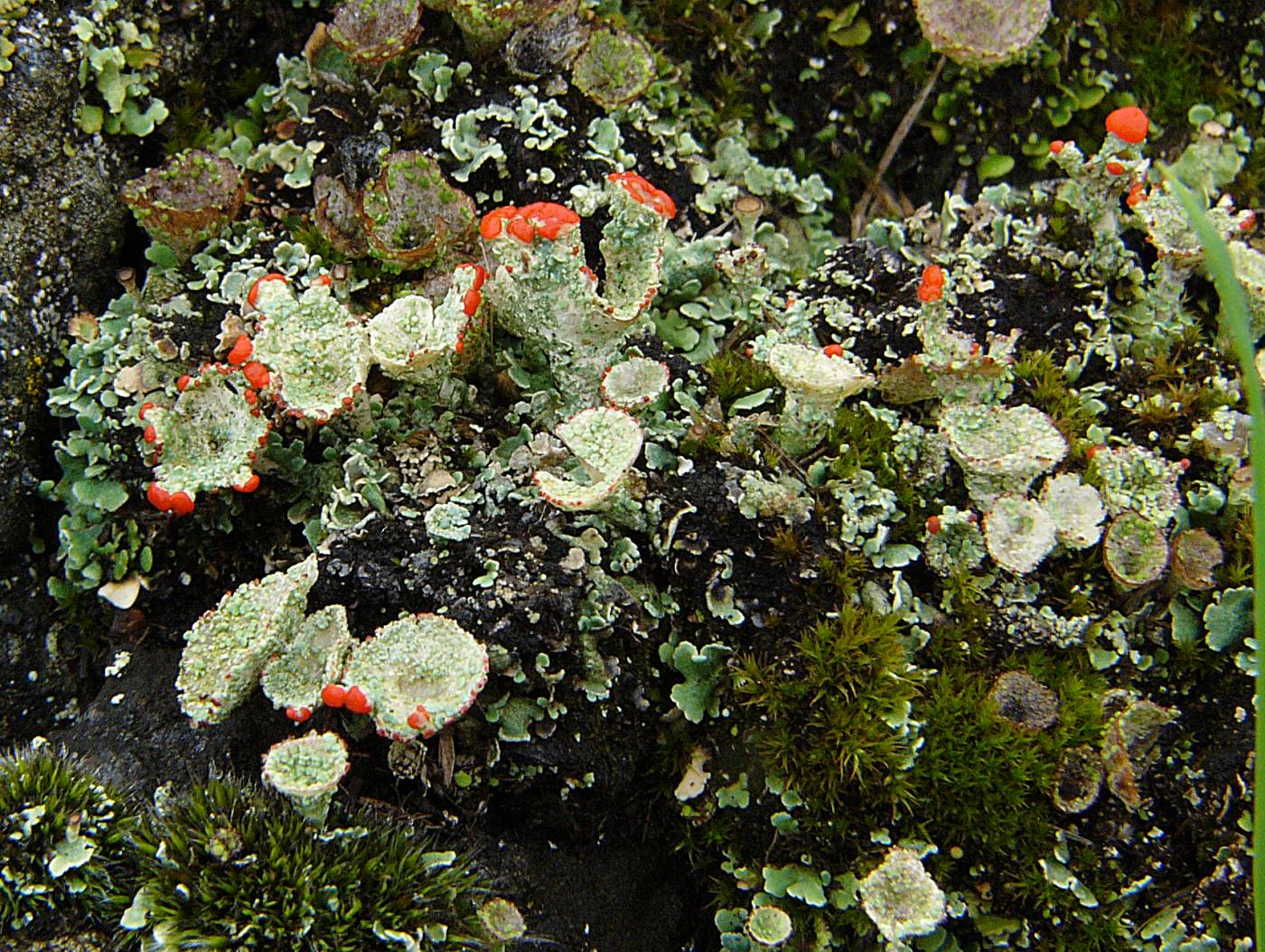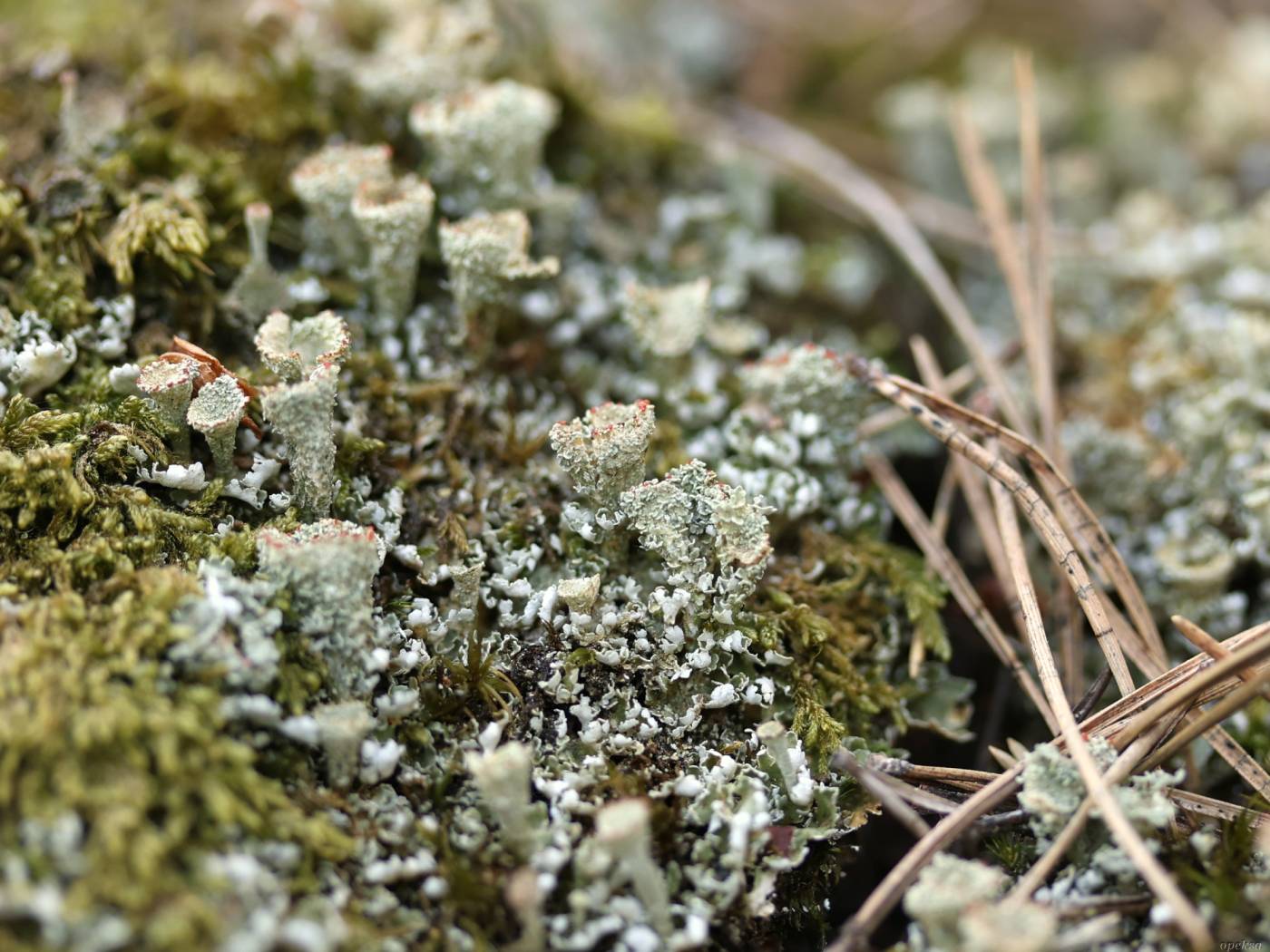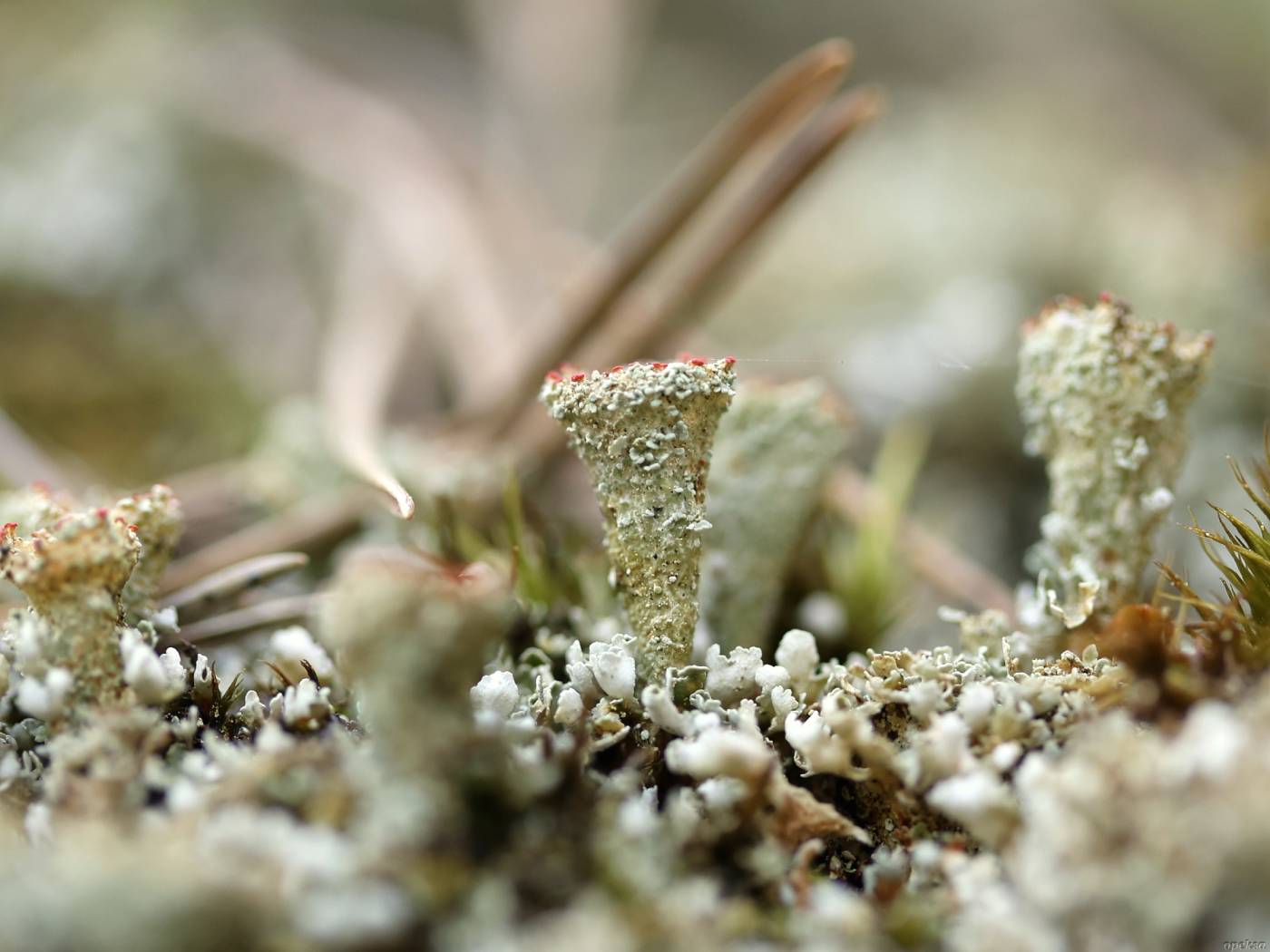Cladonia borealis belongs to the C. coccifera agg. It is distinguished by the presence of barbatic acid (UV+ grey-blue, a relatively poor reaction) and pustulate (button-shaped) plates on the podetium surface, while C. coccifera forms squamule-like plates.
In Europe, it is distributed mainly in montane and boreal areas, where it grows on mineral soil but also on humus or thin layers of soil on siliceous rocks. In the Czech Republic, it is scattered at all elevations and is even known from sandbanks and serpentinites. Generally, it prefers open stands. It is most abundant in the submontane areas, typically on screes and rock outcrops.
Literature: Steinová J., Bouda F., Malíček J., Palice Z., Peksa O., Svoboda D. & Vondrák J. (2015): Poznámky k rozšíření a ekologickým preferencím zástupců skupiny Cladonia coccifera v České republice. – Bryonora 55: 4–19.
taxonomic classification:Ascomycota → Lecanoromycetes → Lecanorales → Cladoniaceae → Cladonia
Red List (Liška & Palice 2010):VU – vulnerable
Occurrence in the Czech Republic
All records: 83, confirmed 79. One click on a selected square displays particular record(s), including their source(s).



